[Wind: 4-6kn / Air Temp: 0.3C / Depth: 3884m / Seas calm]
| • Home |
| • Questions |
| • Participants |
| • Background Information |
We are finishing up the plankton tows and packing up labs for arrival at Punta Arenas early on Wednesday. We’re in Drake Passage, and contrary to its nature, the Drake’s cooperating nicely.
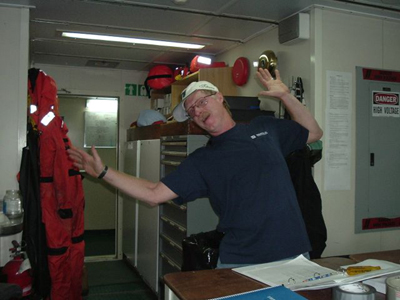
| 1 | 2 | 3 | 4 | 5 | 6 | |
| 7 | 8 | 9 | 10 | 11 | 12 | 13 |
| 14 | 15 | 16 | 17 | 18 | 19 | 20 |
| 21 | 22 | 23 | 24 | 25 | 26 | 27 |
| 28 | 29 | 30 |
| 1 | 2 | 3 | 4 | |||
| 5 | 6 | 7 | 8 | 9 | 10 | 11 |
| 12 | 13 | 14 | 15 | 16 | 17 | 18 |
| 19 | 20 | 21 | 22 | 23 | 24 | 25 |
| 26 | 27 | 28 | 29 | 30 | 31 |
To have to pack up the details in rough weather would have been prohibitive and we might have had to save a lot of it to do once we were tied up at the dock again. This is a blessing, and has everyone, tired as we may be, in very good spirits. Of course, the constant re-supplying of homemade cookies is a huge help!!
Some of our plankton tows are the usual nets we set out with the ship moving 1-2 knots. But we are trying a few “drift tows” as well, where the ship’s propellers are set in idle, and we actually drift with the sea for about a half hour, and the net is about 35 meters down. Will Jaeckle has gotten some very nice samples using this method, and we’re hoping to make a comparison between this method and the method where the plankton are …pushed… into the cod end net with a bit more force. (Will compares this ‘under power’ method to a human’s being forced into a chain link fence with a firehose. He does a nice impression of the larvae point of view [See Image 1].)
Unfortunately, we are heading into a pretty dense phytoplankton zone (remember, dun-dun-daaaaahn, phytoplankton bad, zooplankton good?), so the nets are skimmed with green slime. Green slime translates into pureed spinach soup consistency sample in microscope dishes, and that makes for some difficulty finding microscopic critters. You’ve heard of finding a needle in a haystack? Well, this gives that a whole new meaning.
One thing that has been bountiful in this neck of the woods (an abstract term for me, remember, I haven’t seen a tree in four weeks!!) is ….Salps! One plankton netful brought up more salps than we could fit in a bucket. And although the Salps Lab had for the most part been packed away, those folks jumped out of bed and started it all over again. Never enough salps! (I think they’re possessed!!) …Which leads me to my next installment of “Meet the Scientists” written by Dr. Larry Madin of the Woods Hole Oceanographic Institution.
Salp Project on LMG04-14
Larry Madin and Pat Kremer
Our project, B-307, is a study of the biology of salps in the waters around Antarctica. Salps are large, gelatinous animals that swim freely in the water, feeding on small algae (phytoplankton). They belong to a group of animals called tunicates, and are distant cousins of the vertebrates (and people). Salps are hollow, transparent animals, up to 6 inches long, that pump water through their body to bring in food and to provide jet propulsion. They have an interesting life cycle that alternates between a ‘solitary’ form that produces hundreds of identical offspring connected together in a chain, and the ‘aggregate’ form in the chains, which have one baby that grows up into the solitary stage. [See Images 2 & 3]
One species of salp, Salpa thompsoni, is often very abundant in the plankton during the austral summer around Antarctica. They may compete with krill, the shrimp that are the other major herbivore in the Southern Ocean and have been studied much more than salps. During this cruise we located populations of Salpa thompsoni, collected them alive, and made measurements in the laboratory of their feeding, metabolism, growth and reproduction. As they are fragile and damaged by usual methods of collection involving nets [See Image 4], our main tool for collecting live salps is blue-water SCUBA diving. A team of 4 divers, wearing special dry suits for protection against the freezing water, dives from a small rubber boat away from the main ship. They look for the salps swimming underwater, and collect them in plastic jars to bring back alive to the ship.
Our dives this trip provided hundreds of healthy salps up to about 14 cm (5 ˝ inches) long. We ran experiments to measure how much they ate and their metabolic rates, and were able to keep some alive in the ship’s laboratory for two weeks to see how fast they grow. The salps are quite hardy and survive well in buckets and tanks of cold seawater. We also counted and measured many salps collected in a large net from different locations and will use this information to understand how the population is growing. [See Images 5 & 6] By measuring the amount of chlorophyll in their stomachs, we can estimate how much algae they have been eating. Combining this information with the algal stock in the water, we can calculate the importance of the salps as grazers in the regions where we found them in abundance. Our measurements of defecation rate will enable us also to calculate the importance of salps to the vertical flux of organic matter from the upper water column to the bottom.
Our results will help us understand how salps in Antarctica can be so successful and abundant in the cold but rich ocean around Antarctica. We think that their efficient way of feeding and their ability to reproduce quickly are important parts of their adaptation. They are beautiful and fascinating creatures and we were glad to find so many to study on this cruise. We will return next year for a second cruise to investigate these animals. We plan to build on what we have learned this trip to increase our understanding of the ecology and population dynamics of Antarctic salps by including more sampling of their vertical and horizontal distribution.
The Madin/Kremer lab here is also staffed by Erich Horgan, Larry Madin’s Research Associate and ‘right hand man’ here and at WHOI; Jeff Godfrey from UConn, Dive Safety Coordinator,; Kerri Scolardi, grad student specializing in the study of ctenophores; Brennan Philips, UConn grad student; and Sandy Williams of WHOI, diver and engineer in the generation and analysis of important data. All of these people are divers, and able on-call laboratory personnel as well.
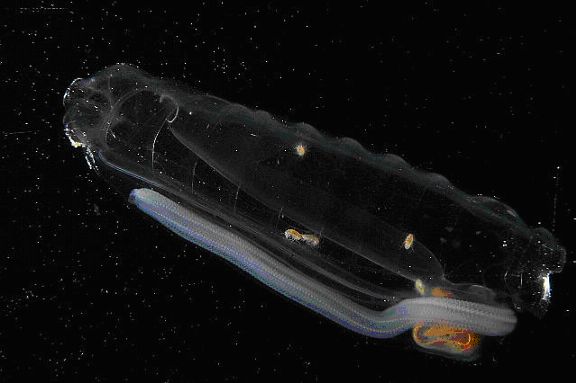
Photo3
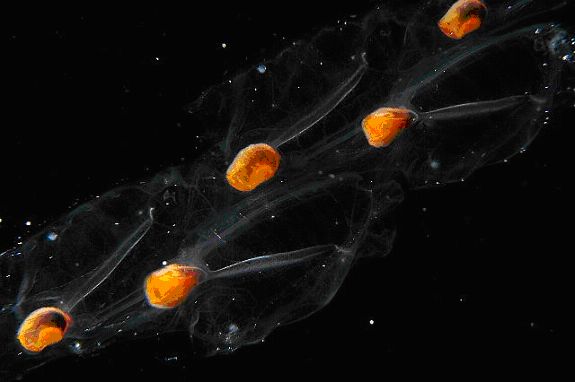
Photo4
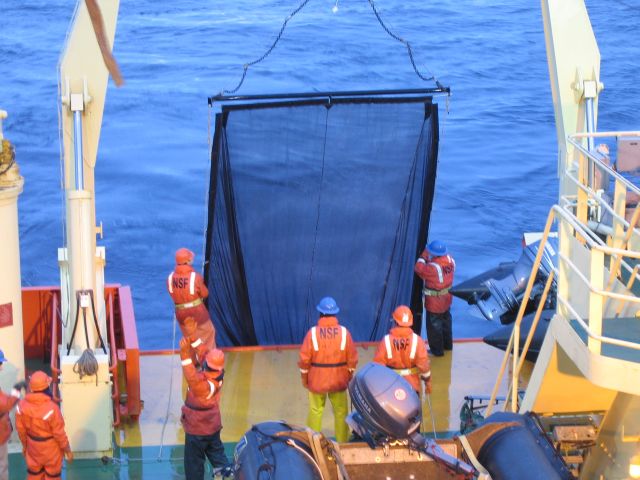
Photo5
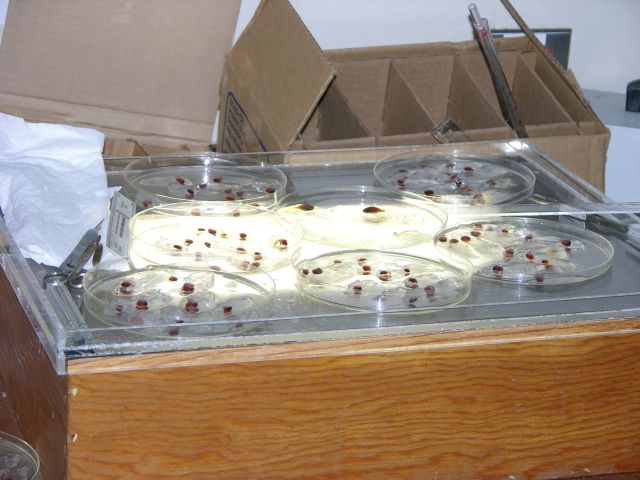
Photo6
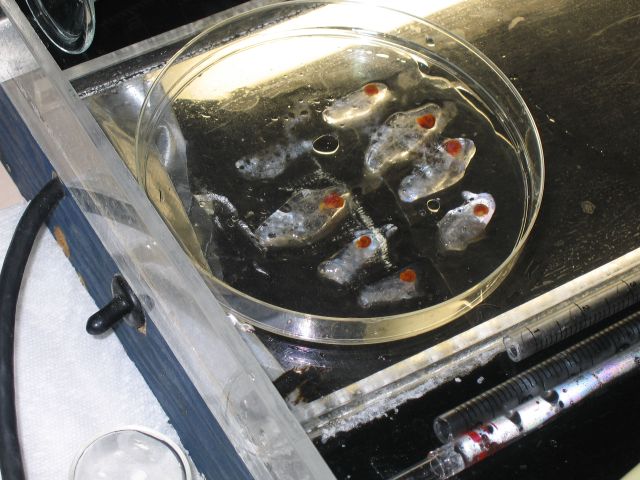
We will be arriving in Punta Arenas in the wee hours of Tuesday morning. Between now and then, activities will involve packing up the last of the labs, sealing and labeling boxes for shipping or for storage in the Warehouse here in Chile. It will be easier for the scientists to come back in 18 months for the second cruise of their grant with certain things already here, ready to go back onto the ship, as long as they don’t need them in their labs at home.
So, this is my last science entry, I’ll write one more time before we get off the ship to close down the Antarctic Cruise Outreach Journal. But the website will be up for a while, so if you have any late breaking thoughts or questions, please write to Antarctic Outreach at: ebailey@whoi.edu I will be watching for correspondence and keeping the website updated with any new or better information for a while longer.
Dinner Menu (shipboard, 12/19): | |
tbd |